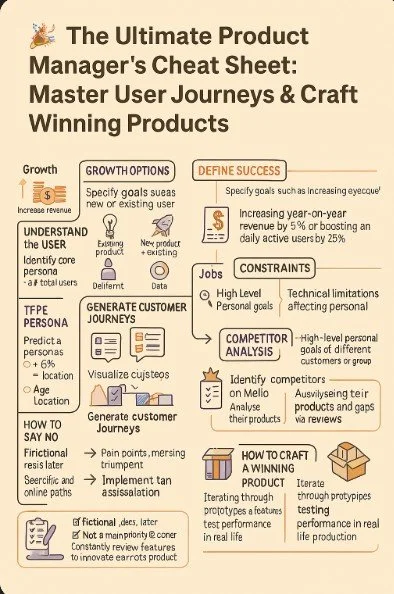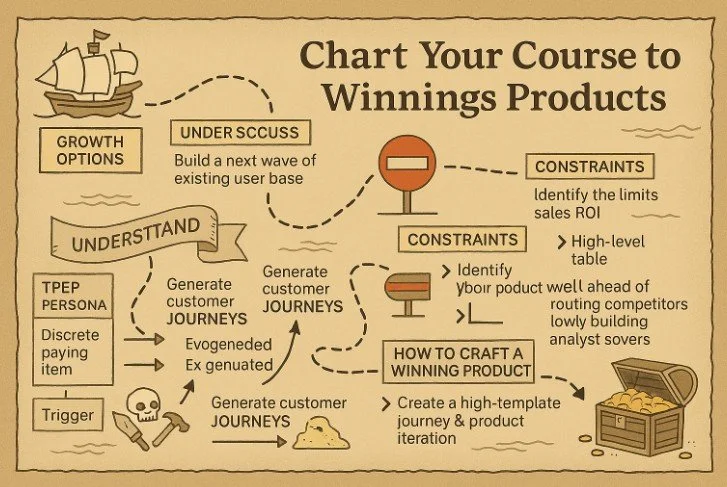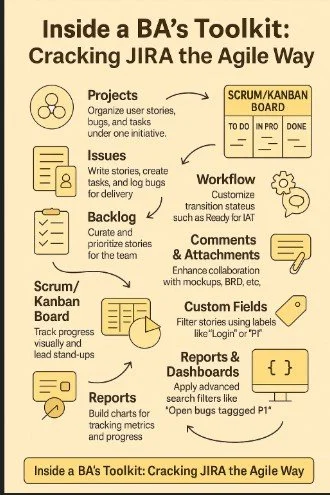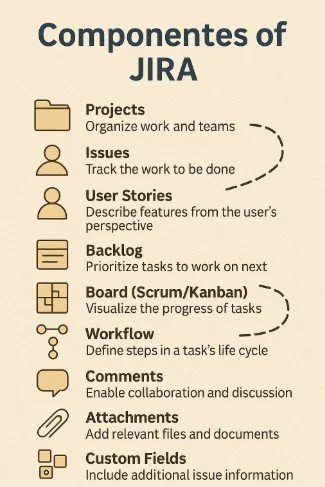🧠 From Chaos to Clarity: Why I Built Case Studies Around This Cheat Sheet
As a Product Manager, I don’t just look at roadmaps—I look at reasons.
I’m obsessed with understanding why users do what they do and how products make them feel. For me, product management isn’t about sprints and standups—it’s about strategy that sticks and systems that scale, while still solving very real human problems.
Over the years, I’ve worked across healthcare, SaaS, blockchain, and consumer platforms—but my north star has always been the user’s journey. So when I came across this brilliant visual breakdown, it felt like a mirror to my own process.
Every segment in this framework—growth levers, user personas, constraints, unmet needs—spoke to me like feature flags waiting to be toggled in my case study bank.
And that’s why I’m building real-world, research-backed product case studies around this playbook. Each one breaks down a challenge I’ve encountered (or spotted in the wild) and turns it into a strategic opportunity map—with wireframes, workflows, and measurable hypotheses.
This isn’t just learning.
This is how I live product.
Welcome to my thought process in motion. 🚀
🧠 "Make Me Happy, Not Just Click!"
✨ The Art & Chaos of Product Management — Through the User’s Eyes
If Product Management were a game, this cheat sheet would be the boss-level strategy guide.
In a world where users spend time, energy, and money just to experience your product, “make me happy” isn’t a request—it’s a demand. That’s where the real MVPs of product management come in.
📌 Understanding the Job-to-Be-Done (JTBD)
Before you jump to A/B tests or dashboards, take a pause—what job is your product really solving?
Whether it’s helping users buy a flight or feel a little less alone, you need to understand both the functional and the emotional jobs your product is hired for.
This cheat sheet reminds us: don’t just focus on your product—focus on the problem. Everything else is noise.
🚀 Growth Options Aren’t Guesswork
You don’t scale by throwing features at the wall. This visual cracks open four growth levers:
New services for new customers
New features for existing users
Acquisition using current services
Improvements to existing journeys
You pick your path, your hypothesis, and your quarter. And then you sprint.
💁♀️ User Personas: Your Silent Investors
You're not building for “everyone.” You're building for someone who:
Has a struggle
Has a goal
Has a story
This framework breaks it down into clear, no-fluff steps—from fictional names and demographic tags to motivations and frustrations. Personas aren’t fluffy—they’re filters for every decision you make.
💬 Talk, Don’t Assume
If you're not interviewing users, you're designing blindfolded.
The sheet’s biggest flex?
“Always talk to the end user. Prioritize their problem. Don’t ask direct questions—use storytelling mode.”
Hell yes.
🔍 Competitor Analysis is More Than Spying
You’re not here to copy the market—you’re here to update the table stakes. Competitor analysis in this sheet is framed around:
Trends & tech
Pricing moves
Customer gaps
Strategic learning
Because your product isn’t just about being different—it’s about being right.
🎯 Final Frame: Opportunity is Where Outcome Meets Constraint
Pair this with the legendary DHHD Framework by Gibson Biddle:
✅ Delight
✅ Hard to copy
✅ High margin
That’s how you prioritize. That’s how you launch. That’s how you lead.
The Ultimate API Cheat Sheet for Product Managers
In today’s fast-paced tech landscape, product managers don’t need to be developers—but understanding how APIs work is essential to building great products. APIs are the bridges that connect different platforms, enabling data exchange and feature integration. To help PMs stay on top of their game, here’s a quick cheat sheet covering everything from core principles to best practices.
1. Core Principles of APIs
Before diving into technicalities, it’s important to understand foundational concepts:
Think RESTfully: REST (Representational State Transfer) is a stateless architecture style that enhances API scalability and simplicity.
Efficiency matters: Design APIs to use minimal resources and provide high performance.
2. HTTP Methods Simplified
Each HTTP method performs a specific operation:
GET: Retrieves data (e.g., a list of users).
POST: Sends new data (e.g., submitting a form).
PUT: Updates existing data entirely.
PATCH: Partially updates data (useful for making minor changes).
DELETE: Removes data.
3. HTTP Status Codes at a Glance
These codes help you quickly understand what’s happening behind the scenes:
2xx: Success (e.g., 200 OK)
3xx: Redirection (e.g., 301 Moved Permanently)
4xx: Client errors (e.g., 404 Not Found)
5xx: Server errors (e.g., 500 Internal Server Error)
4. Security Essentials
Product managers should ensure that APIs are safe for users and the system. Focus on:
API protection: Safeguard endpoints with secure protocols.
Access control: Use OAuth tokens, API keys, and TLS encryption to authorize and encrypt traffic.
Consistency and clarity: Use clear and consistent naming conventions and document all changes.
5. Best Practices for API Design
Your API is a product too. Make it usable:
Pagination: Return data in manageable chunks to improve performance and user experience.
Consistency: Keep endpoints and responses uniform.
User-centric design: Always consider the developer and consumer experience when building APIs.
6. Tools Every Product Manager Should Know
Modern product managers rely on a suite of tools that integrate via APIs to manage delivery, track progress, and enhance collaboration:
JIRA – Task and issue management
Salesforce – CRM and sales tracking
Google Workspace – Document and calendar integration
Mural – Collaborative whiteboarding
Kanban tools (like Trello or Asana) – Visual project management
Performance tracking systems – To monitor usage and success metrics
Actle & Axvs – (Assumed placeholders) Likely refer to internal tools or frameworks
Observation tools – For tracking page usage and load times
🏴☠️ The PM’s Treasure Map: Sailing Through User Journeys to Build Gold-Winning Products
Ahoy, Product Captains! 🗺️
Every product has a destination—success—but the voyage is rarely smooth. This treasure map is your compass to mastering user journeys and crafting products that sparkle in the market.
From understanding who your users truly arrr (personas, constraints, and motivations) to hunting for gaps your competitors be blind to, this map walks you through each milestone. Each pitstop reveals where gold lies buried: new growth options, smarter strategy, killer UX, and market-fit clarity.
No parrots, no pixie dust—just deep empathy, bold execution, and a product so fine, even the seas would part for it.
X marks the insight. Let the discovery begin. 🧭⚓️
🔍 Script Summary: How BAs Use JIRA in Scrum Projects
Projects: Organize user stories, bugs, and tasks under one initiative. This is your command center.
Issues: Write stories, create tasks, log bugs—then break them down into digestible units for teams.
User Stories: Build your feature story-by-story—whether it's UAT prep or a research dive.
Backlog: Not just a list—it's a curated, prioritized playground groomed to perfection by your BA.
Scrum/Kanban Board: The visual pulse check. Track progress and keep stand-ups honest.
Workflow: Customize transition states like “Ready for UAT” and keep things flowing.
Comments & Attachments: Drop screenshots, mockups, BRDs—whatever fuels clarity.
Custom Fields: Filter and tag stories with precision—“Login,” “Payments,” “P1” and beyond.
Reports & Dashboards: Think charts, velocity reports, burndown views. Your reporting magic lives here.
JQL: Advanced search filters for pros. “Open bugs tagged P1” anyone?







